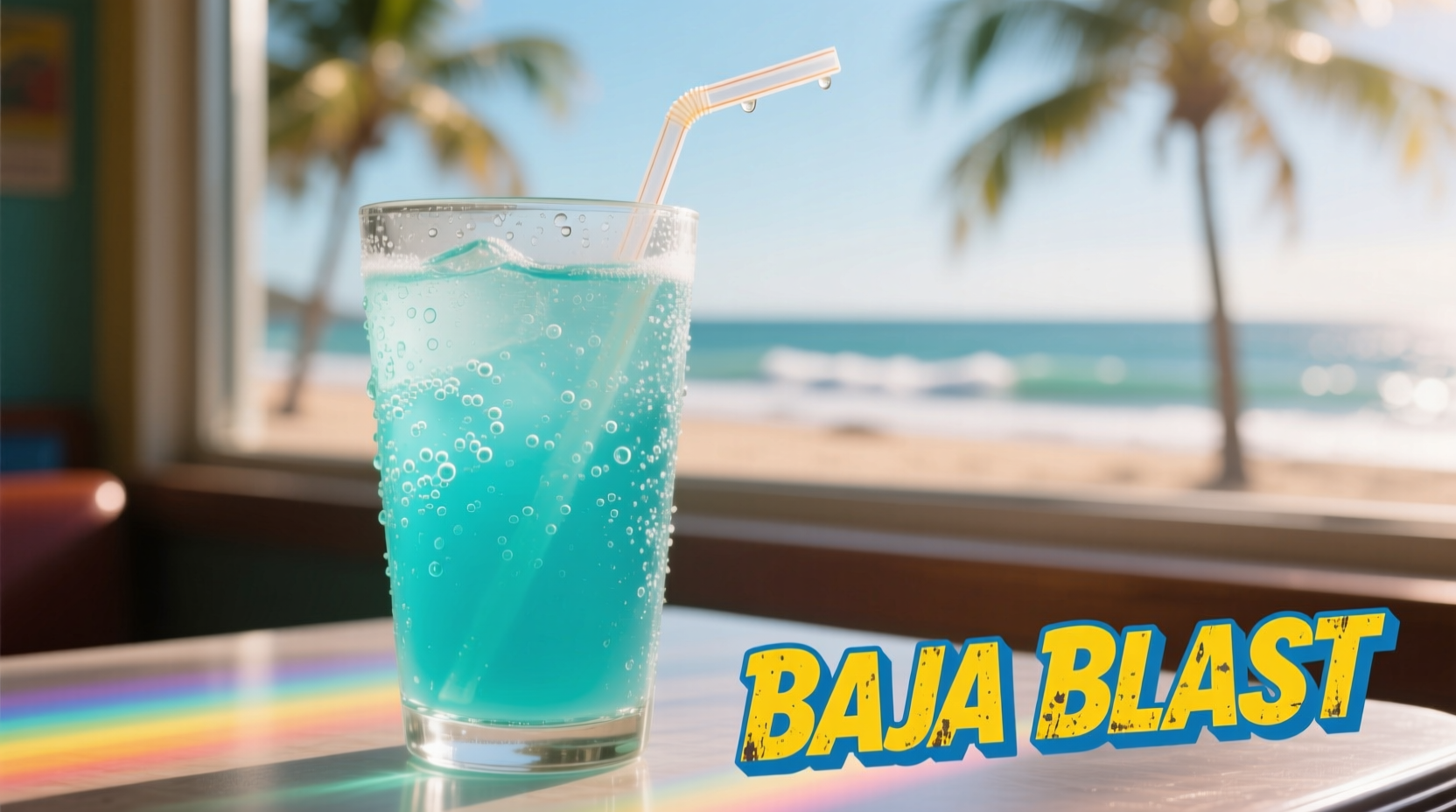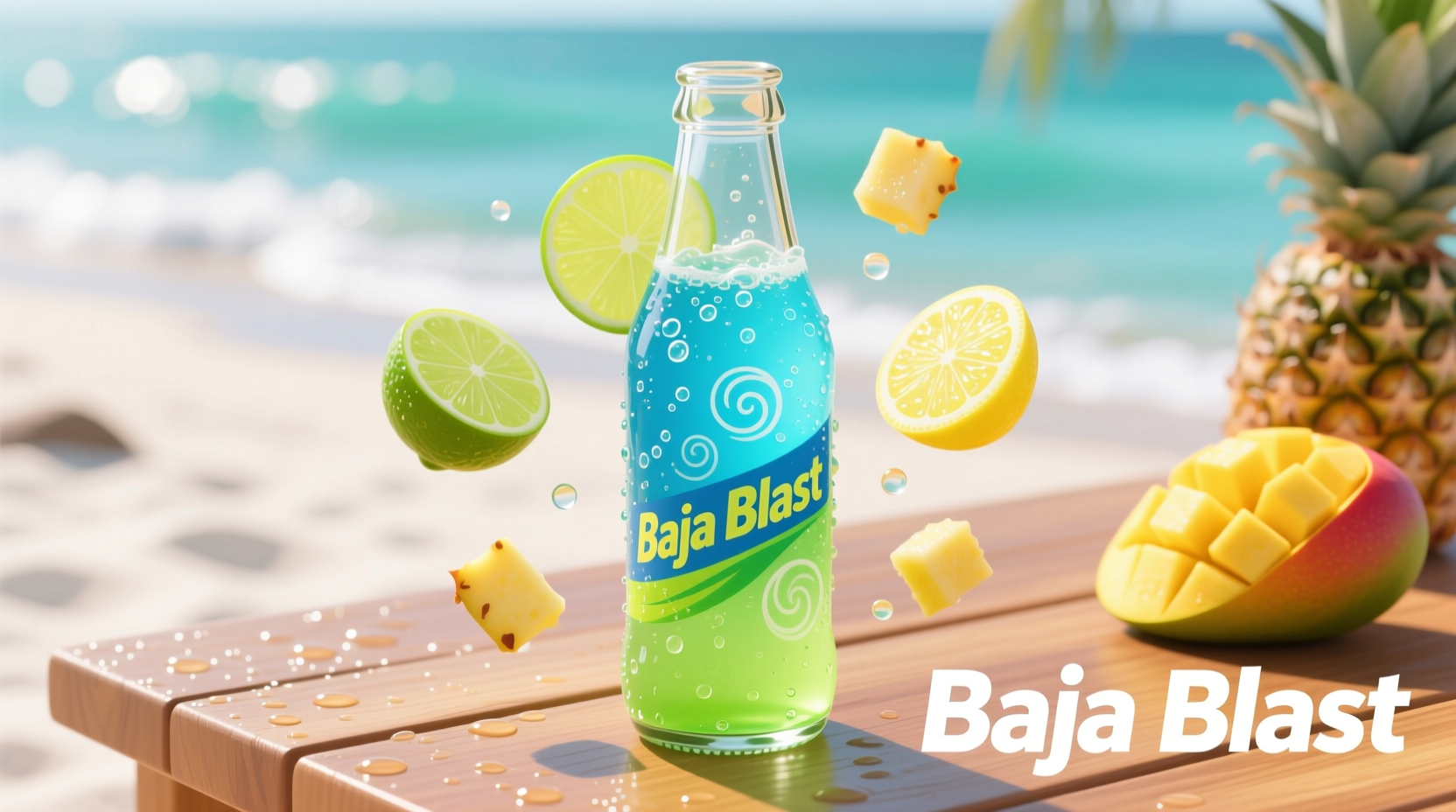Ever wondered what makes Baja Blast that uniquely refreshing drink you can't quite place? You're not alone. This iconic beverage has developed a cult following since its debut, with fans constantly searching for that perfect tropical lime experience. Understanding exactly what flavors compose Baja Blast isn't just about satisfying curiosity—it helps you identify authentic versions, find similar drinks, or even recreate the flavor profile at home.
The Core Flavor Components of Baja Blast
Baja Blast's flavor profile centers around a vibrant lime base that's distinctly different from standard lime sodas. Unlike regular lime drinks that often lean toward medicinal or sour notes, Baja Blast delivers a smooth, tropical interpretation of lime. The primary flavor components include:
- Tropical lime - The dominant flavor, but with a sweeter, fruitier profile than standard lime
- Mango undertones - Not overpowering, but provides a subtle sweetness and tropical complexity
- Light citrus blend - Hints of other citrus fruits that round out the profile
- Subtle berry notes - Some detect faint raspberry or berry elements that add depth
What sets Baja Blast apart from other lime-flavored beverages is how these elements blend together. Rather than tasting like artificial lime candy, it delivers a more nuanced, fruit-forward experience that's reminiscent of fresh tropical fruits. Beverage flavor experts note that the magic happens in the balance—too much mango would make it taste like a different drink entirely, while insufficient tropical notes would reduce it to ordinary lime soda.

How Baja Blast's Flavor Has Evolved Over Time
Baja Blast wasn't always available outside Taco Bell locations, and its flavor profile has seen subtle adjustments throughout its history. Understanding this timeline helps explain why some fans claim the current version tastes different from what they remember:
| Time Period | Availability | Flavor Characteristics |
|---|---|---|
| 2004-2010 | Taco Bell fountain only | Stronger mango presence, slightly sweeter profile |
| 2011-2016 | Taco Bell fountain and limited retail | More balanced lime-mango ratio, slightly less sweet |
| 2017-Present | Nationwide retail and Taco Bell | Sharper lime focus, subtle tropical notes, reduced sweetness |
According to Beverage Industry analysis, these adjustments reflect changing consumer preferences toward less sweet beverages and more authentic fruit flavors. The current formulation maintains the distinctive tropical lime essence while aligning with modern taste preferences.
The Science Behind the Signature Taste
Creating a consistent tropical lime flavor that appeals to mass audiences involves precise flavor chemistry. Beverage developers use a combination of natural and artificial flavors to achieve Baja Blast's distinctive profile:
- Lime oil distillates provide the authentic citrus foundation
- Mango flavor compounds (primarily ethyl butyrate and other esters) create the tropical undertones
- Citrus blend enhancers round out the profile with complementary notes
- Acid regulators balance the tartness to prevent overwhelming sourness
The U.S. Food and Drug Administration's guidelines on flavorings require that all flavor components be generally recognized as safe (GRAS). This means while Baja Blast uses flavor compounds to achieve its distinctive taste, all ingredients meet strict safety standards. The specific blend ratio remains a closely guarded trade secret, which explains why exact recreations are challenging.
Where to Find Authentic Baja Blast Flavor
Not all products labeled as Baja Blast deliver the authentic flavor profile. Here's how to identify genuine Baja Blast experiences:
- Taco Bell fountain drinks - Still considered the gold standard for authentic taste
- Mountain Dew Baja Blast bottles/cans - The retail version available nationwide
- Seasonal variations - Like Baja Blast Frozen or Baja Punch (different flavor profile)
Be cautious of knock-off products that use "Baja" in their name but lack the distinctive tropical lime profile. Authentic Baja Blast should have that signature balance of lime and tropical notes without overwhelming sweetness or artificial aftertaste. If you're trying to recreate the flavor at home, focus on high-quality lime juice combined with a touch of mango puree and a hint of citrus blend.
Why Baja Blast Stands Out in the Flavor Landscape
In a market saturated with citrus-flavored beverages, Baja Blast maintains its distinctive position through its specific flavor balance. Unlike standard lime sodas that often taste medicinal, or tropical blends that become overly sweet, Baja Blast hits a sweet spot that's:
- Fruit-forward without being cloying
- Citrusy without excessive tartness
- Tropical without losing its lime identity
- Refreshing with a clean finish
This precise balance explains why Baja Blast has maintained popularity for nearly two decades while many similar beverages have come and gone. The flavor profile works particularly well as a complement to spicy foods, which contributed to its initial success at Taco Bell.
What is the primary flavor in Baja Blast?
The primary flavor in Baja Blast is tropical lime, which forms the foundation of its distinctive taste profile. Unlike standard lime flavors, Baja Blast's lime has a sweeter, fruitier interpretation with tropical notes that differentiate it from regular lime sodas.
Does Baja Blast contain real mango?
Baja Blast does not contain actual mango juice. Instead, it uses flavor compounds that create mango notes as part of its tropical profile. The mango presence is subtle and serves to complement the primary lime flavor rather than dominate it.
How does Baja Blast differ from regular Mountain Dew?
Baja Blast has a distinctly different flavor profile from regular Mountain Dew. While Mountain Dew is citrus-forward with lemon and orange notes, Baja Blast focuses on tropical lime with mango undertones. Baja Blast is generally less sweet and has a cleaner finish compared to the more citrus-blend profile of original Mountain Dew.
Is the Baja Blast flavor the same at Taco Bell and in stores?
The Baja Blast flavor differs slightly between Taco Bell fountain drinks and the retail bottled version. The Taco Bell fountain version has traditionally had a stronger mango presence and slightly different sweetness level. While the bottled version captures the essence, many fans prefer the fountain version for its more pronounced tropical notes.
Why does Baja Blast taste different from other lime-flavored drinks?
Baja Blast tastes different because of its specific blend of tropical lime with subtle mango and other fruit notes. Most lime sodas focus solely on lime flavor, which can taste medicinal or overly sour. Baja Blast's formulation creates a more balanced, fruit-forward experience that's refreshing without being harsh, setting it apart from standard lime beverages.











 浙公网安备
33010002000092号
浙公网安备
33010002000092号 浙B2-20120091-4
浙B2-20120091-4